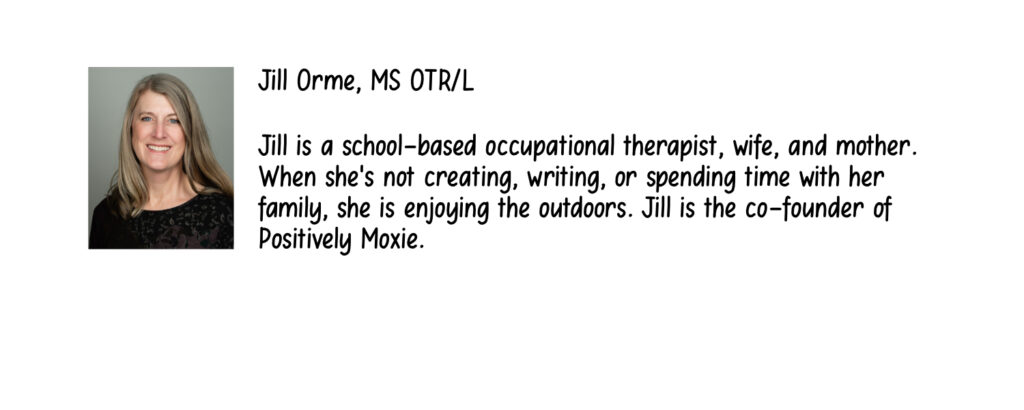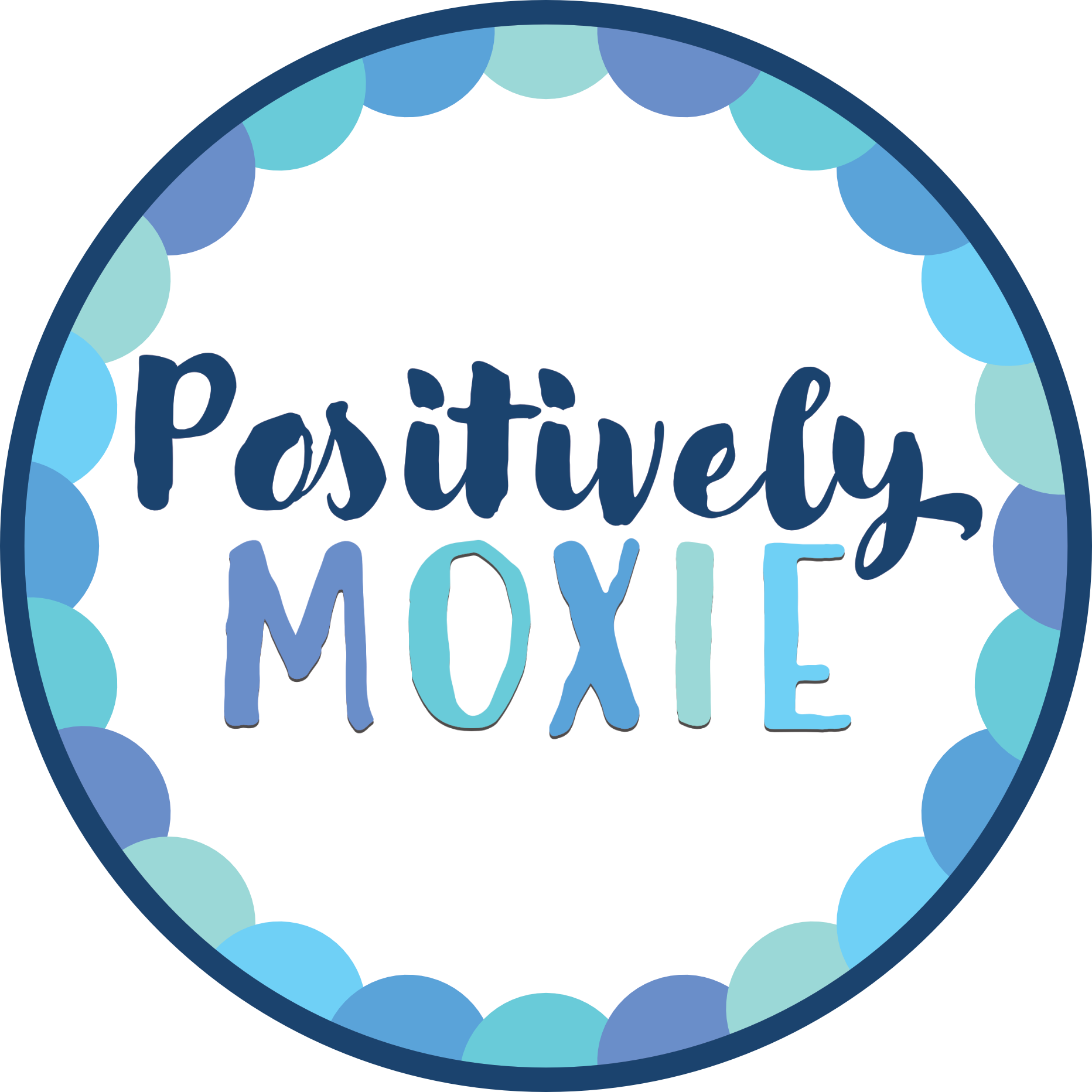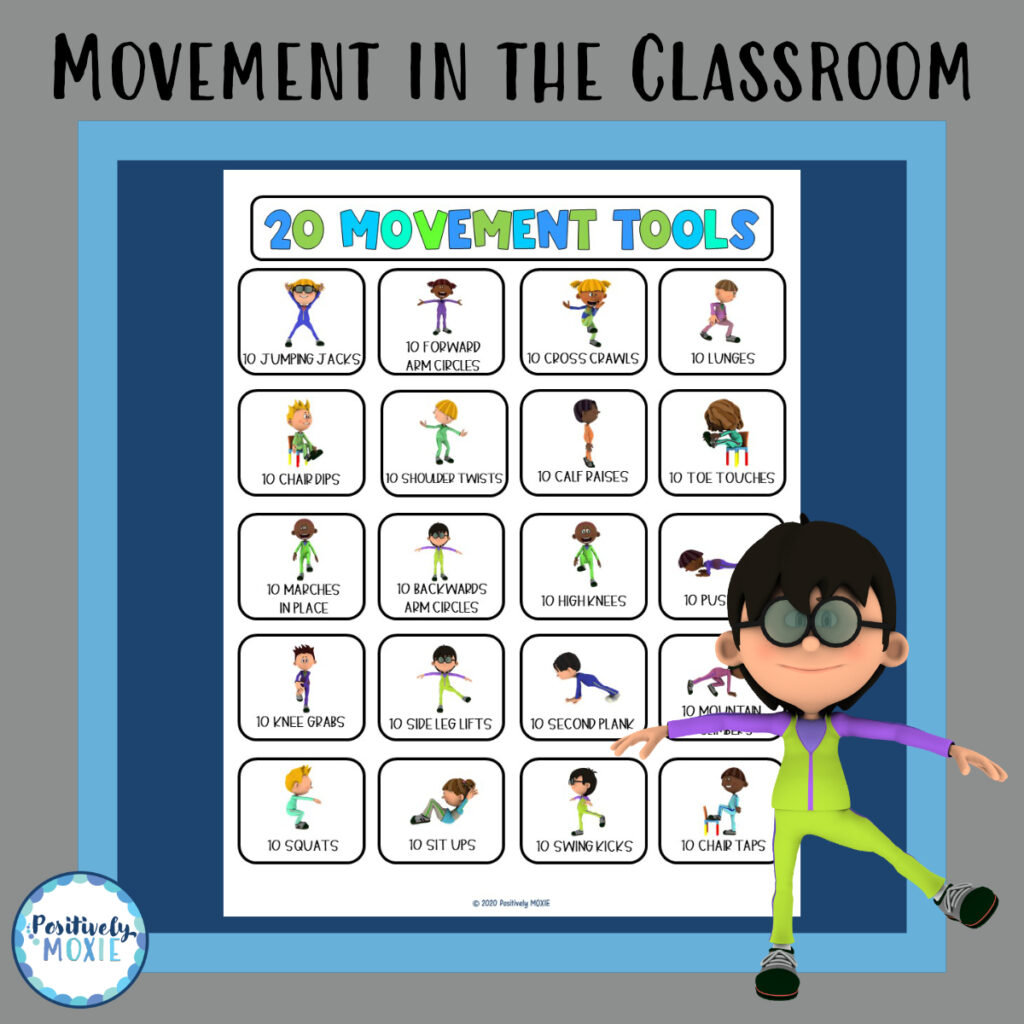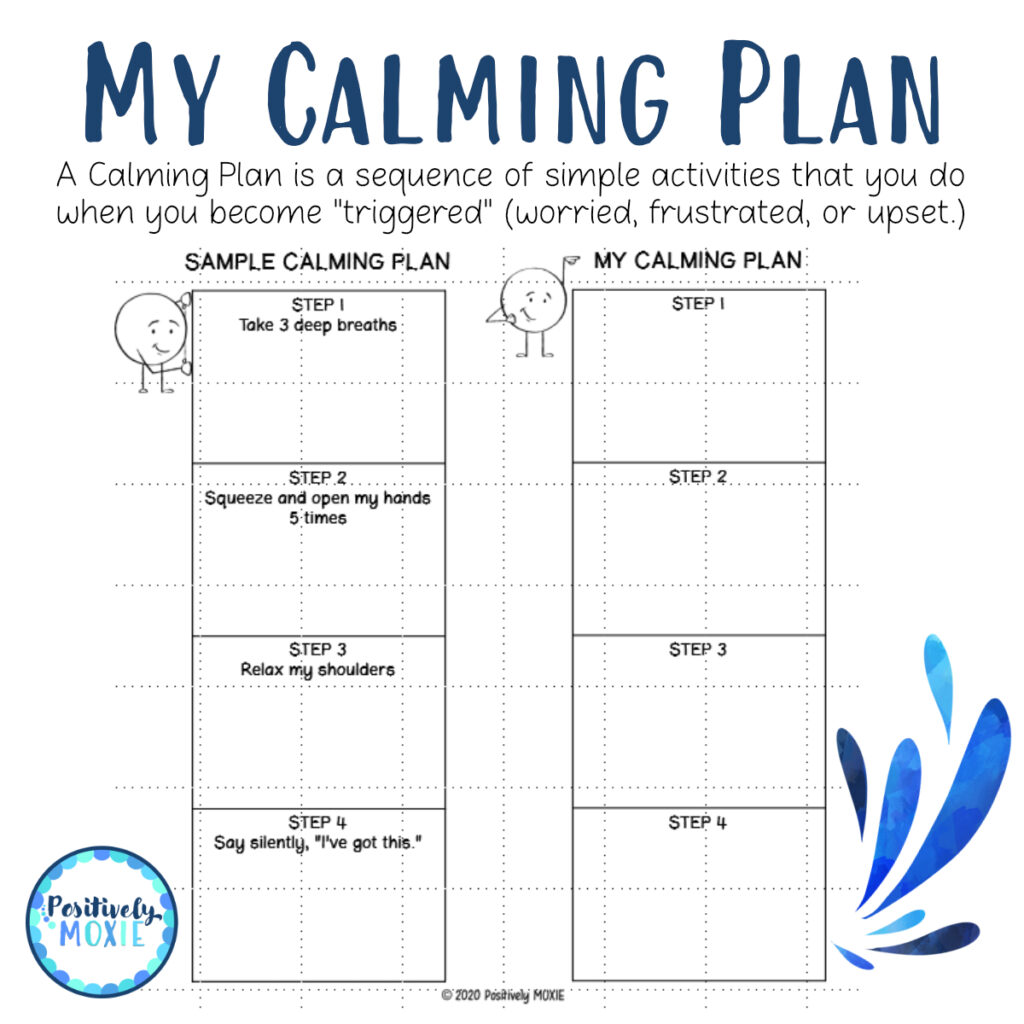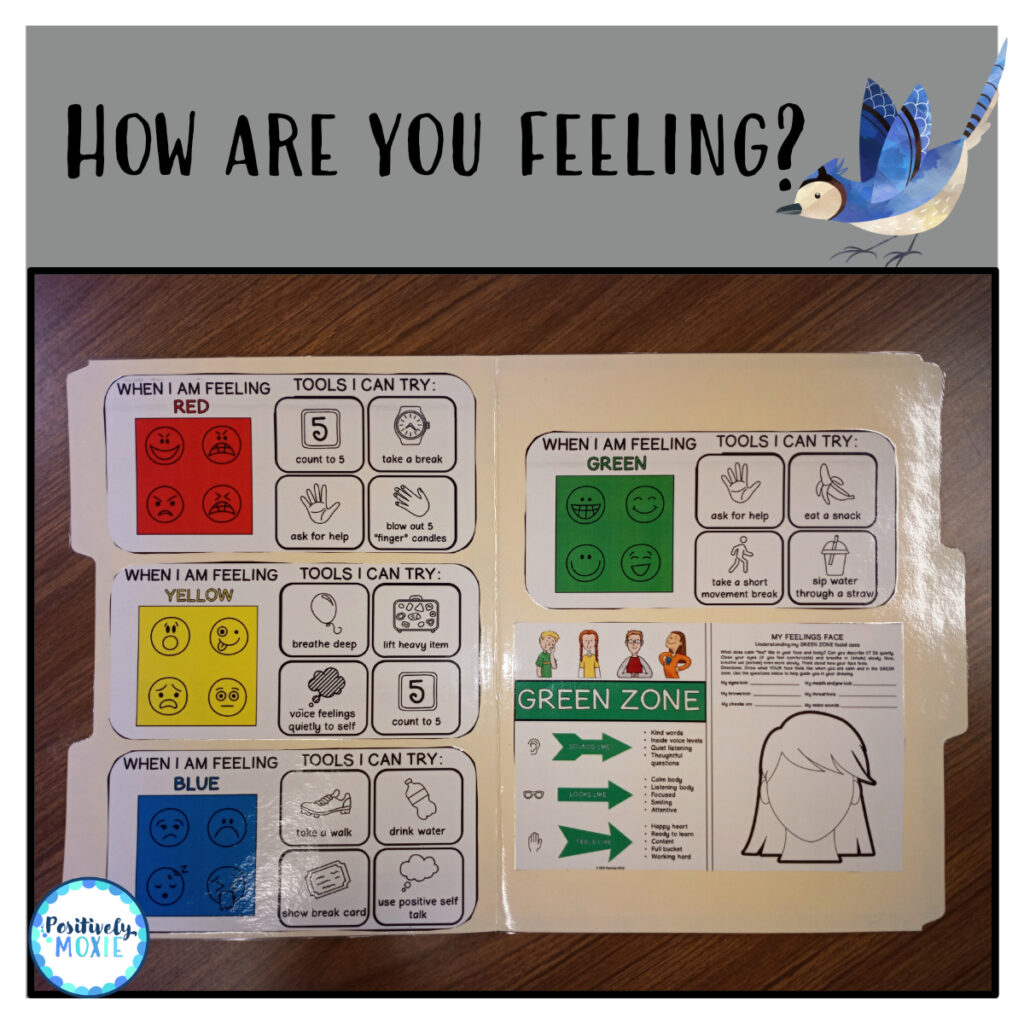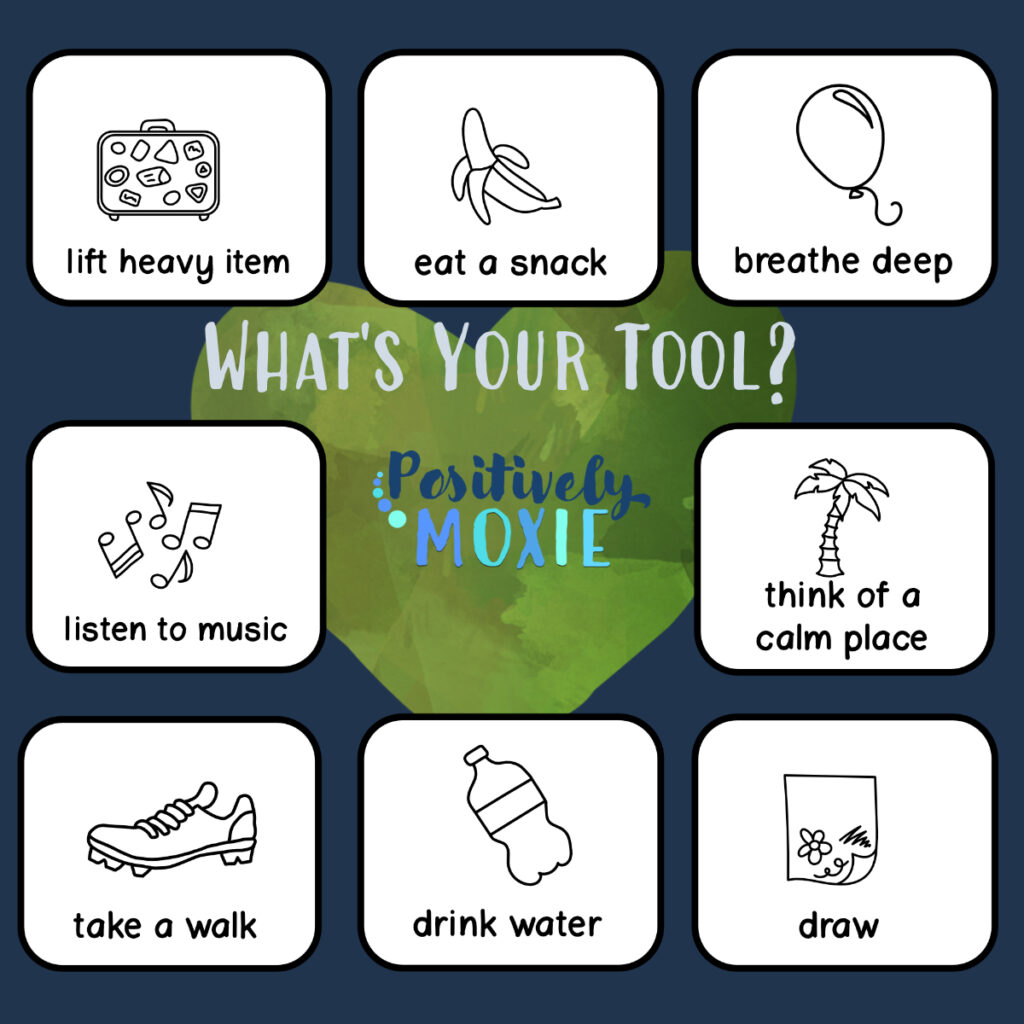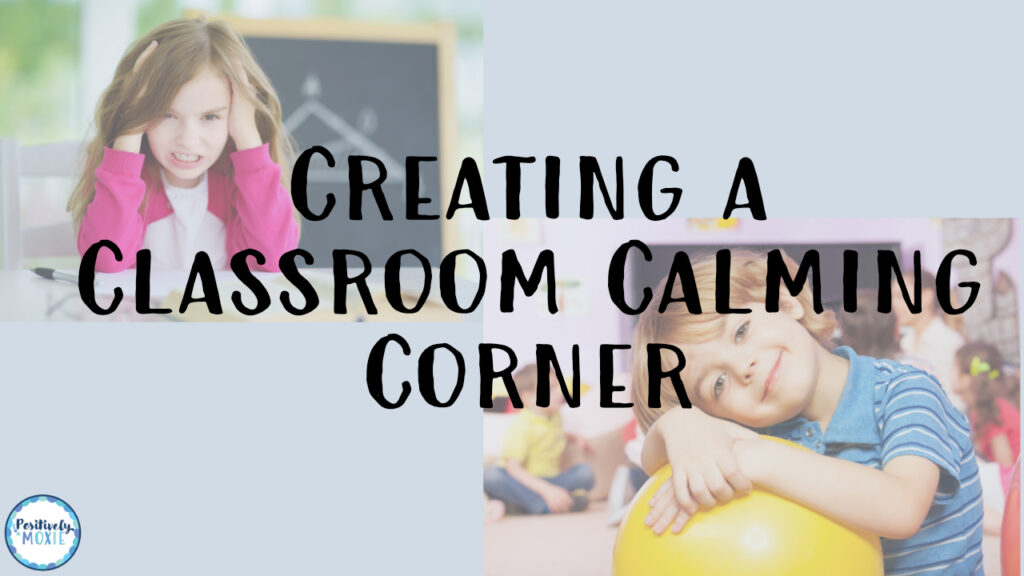
Creating a classroom calming corner helps students self-regulate. Classroom behaviors can be a result of a variety of challenges. Sometimes we know exactly why our students become dysregulated, other times, not so much. There can be many issues that contribute to student behavior. The STAR Institute identifies seven components that contribute to regulation within a student’s “regulation cup.” These pieces include emotional, language, sensory modulation, physical, cognitive attention, social, and interoception. As we can see, behavior is multifaceted!
It often becomes necessary to allow our students an opportunity to take a short break within our classroom to cool down and self-regulate in order to get back to being engaged learners.
Making a calming corner within our general education or special education classroom is a useful and efficient way to help manage student behaviors. This provides a safe area for the student to de-escalate and take the necessary time needed before returning to the larger classroom.
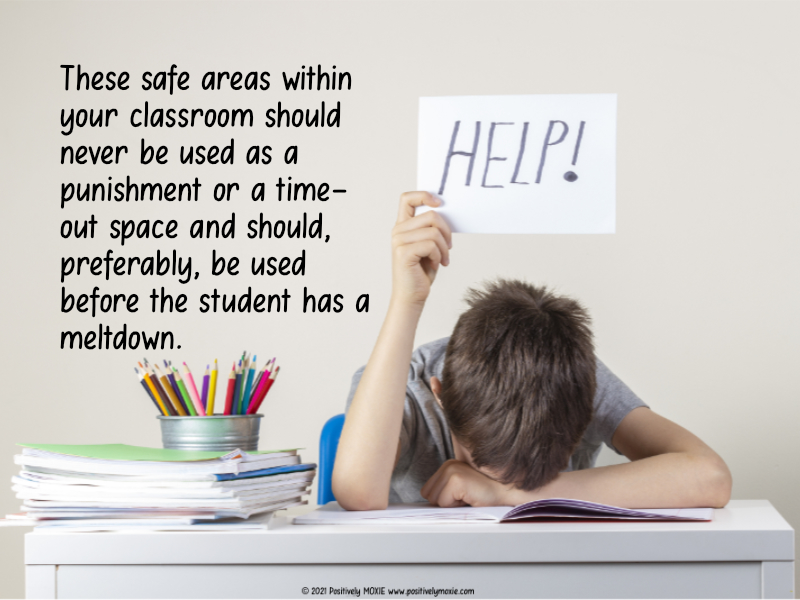
Classroom Safe Areas
Creating a small separate area within the classroom, designated as a calm or safe area helps students who tend to become overstimulated. These areas are intended to give students some privacy, safety, and an opportunity to self-regulate their brains and bodies. Specifically, this corner of the classroom enables tired, overwhelmed, or stressed students to take a few minutes away from busy classmates and environmental challenges. These safe areas should never be used as a punishment or a time-out space and should, preferably, be used before the student has a meltdown. This area can be quite small and adjusted according to classroom management style, grade level, and room arrangement.
In order to provide a semi-private, safe, and quieter location in your classroom, it may be necessary to use classroom items already found. For example, using bookcases, filing cabinets or similar items for partial physical and visual boundaries for this area is useful.
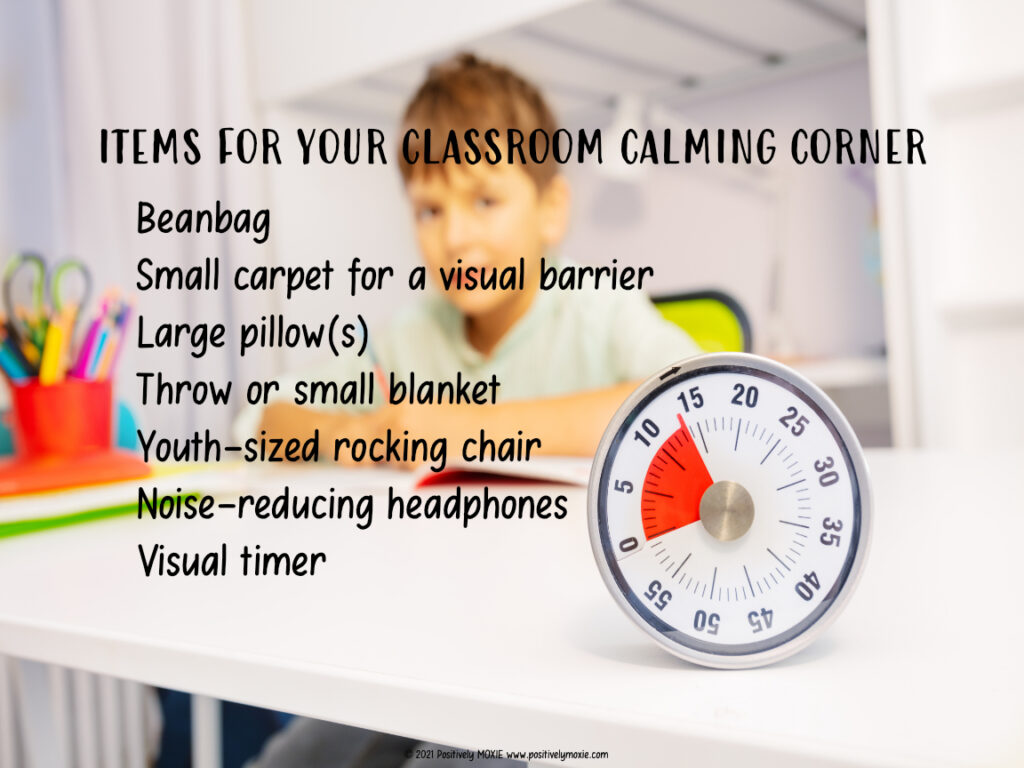
Items for your Classroom Break Area
Items to consider for your safe / break area within your classroom include:
- Beanbag
- Small carpet for a visual barrier
- Large pillow(s)
- Throw or small blanket
- Youth-sized rocking chair
- Noise-reducing headphones
- Visual timer, such as a TimeTImer
Movement Breaks
Movement breaks are short bursts of simple exercises done to provide energy release and prepare the brain for learning. In addition, movement improves brain function by increasing oxygen to the brain through better circulation which positively impacts cognitive function, attention, and memory. Posting a movement break poster is an easy way to help provide students with a quick movement break.
Personal Calming Plan
Having students create their own plan of how they can de-stress when escalated is another key piece to self-regulation. A calming plan is a sequence of simple activities that we do when we become “triggered,” causing them to feel worried, frustrated, or overwhelmed. Writing out the steps is a useful way to help sequence what steps we might take to calm ourselves.
Breathing Tools
Teaching our students to appropriate calming strategies can make all the difference when it comes to teaching self-regulation. Mindful breathing is a well-researched, science-based tool that calms our nervous system by activating our body’s natural relaxation response. Mindful breathing assists the body by slowing heart rate, lowering blood pressure, and improving focus.
A file folder guide is used to provide students with a personal resource they can refer to for self-regulation. It is a visual tool to help them self-regulate by identifying calming and coping tools they need and use most.
Calming and Coping Tools
Calming and coping tools are strategies that we use to help our nervous system calm down and cope with stressful situations. We need tools for dealing with stress. Many of the tools have both physiological components that help to calm the sensory and nervous system as well as cognitive components that act to quiet the mind. The goal of using a tool is to help us regulate our emotional responses so we do not automatically go into a stress response or “flight, fight, freeze” reaction when encountering moments of frustration – both real and imagined!
A sensory basket is a tool to help students self-regulate using a small collection of sensory items in a container located in one designated space. The basket contains items of different senses including tactile, visual, and smell, for example. When a student feels overwhelmed by big feelings, he or she learns to use something from the calming basket. Usually, a student needs just a few minutes to accomplish this before returning to classroom activities. When introducing the calming basket to students, explain that these are “tools” and not toys to help us calm down. Explain where the sensory basket will be kept, when it can be used, how long to use it, and how many can use it at once.
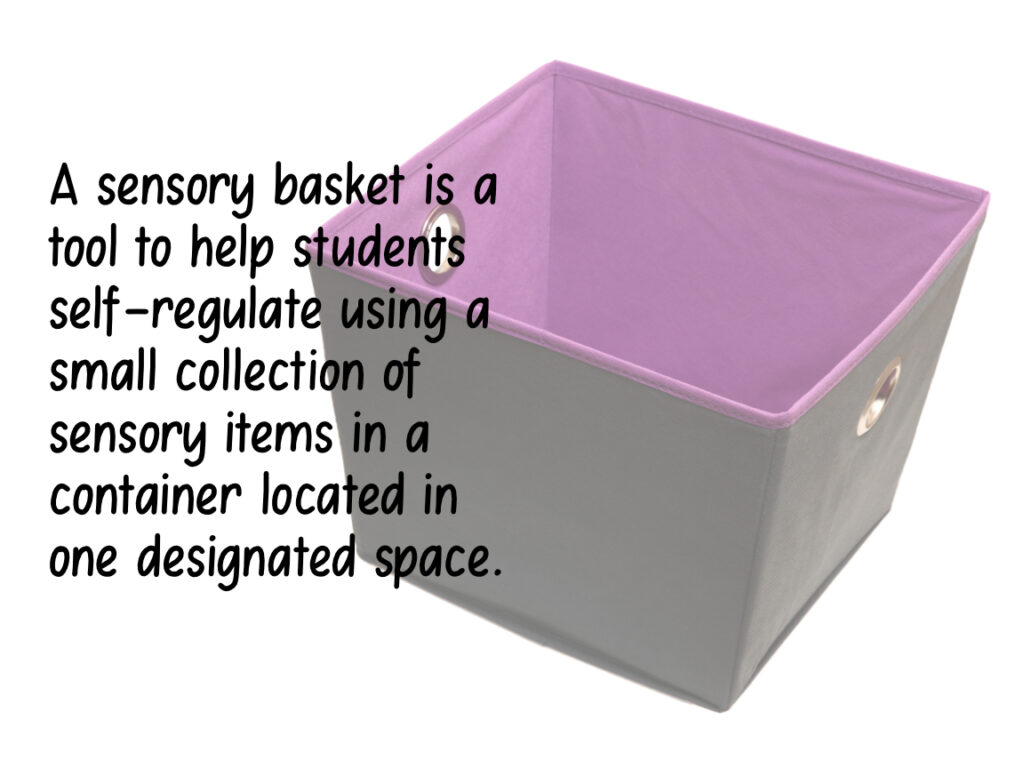
Sensory Basket
Calming baskets may contain the following items (or similar):
- Fidget items – a variety of soft or quiet items
- Visual sparkle bottle
- Pinwheel (for breathing)
- 3-minute visual timer
- Soft fabric
- Smaller-sized coloring pages/mandala (1/2 sheet or ¼ sheet) for coloring or doodling and crayons or colored pencils.
- Vanilla or lavender scents
Students want to learn and be engaged within their learning environment. Providing a calming corner helps to equip our students with the tools they need to regulate their actions. Create a classroom calming corner today!
